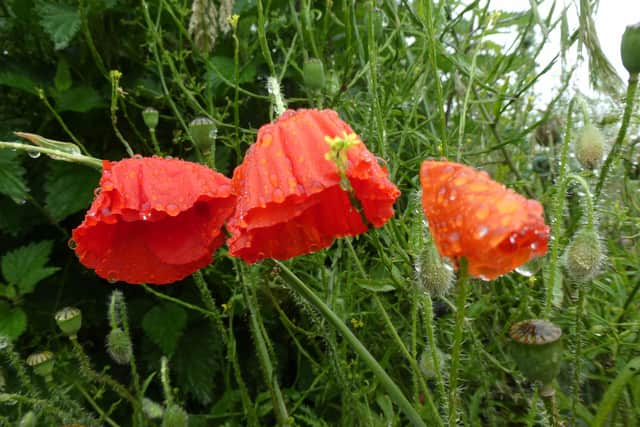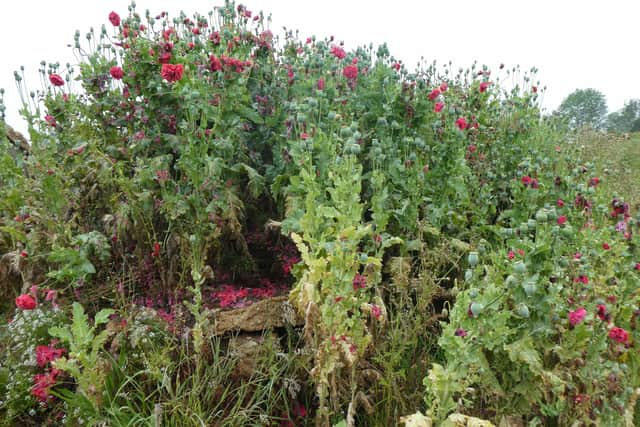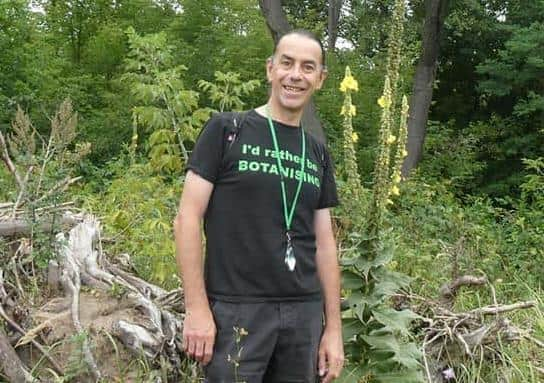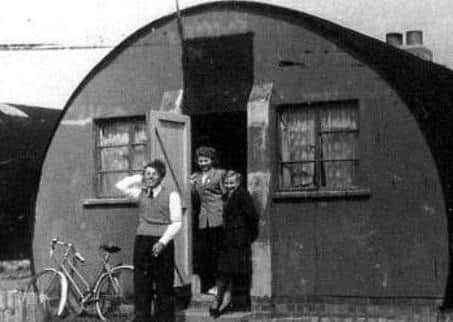Poppies flower poignantly on Melton site where Poles lived in huts after war


The land, off Sandy Lane, once housed hundreds of Poles, including families who had been displaced by the war and Polish air force personnel who had served in the conflict and their relatives.
They lived in a collection of barrel-shaped Nissen huts, which were freezing cold in the winter, for more than a decade before members of the community began moving into houses in the town in the 1950s.
Advertisement
Hide AdAdvertisement
Hide AdThe derelict huts, which were covered in ivy, were cleared from the site after an illegal rave was held there a few years ago.


And town resident Richard Mabbutt has now discovered that poppies - the Polish national flower - have sprung up from where the huts once stood.
Mr Mabbutt took photographs and contacted the Melton Times to tell us: “The Polish people who lived in the huts had obviously planted them around the huts to remind them of home and now all these years later many have stayed and have become a great part of our community.
“Many of them now have grandchildren, having formerly been children just after the war when they grew up in the huts.
Advertisement
Hide AdAdvertisement
Hide Ad“As an amateur botanist and having a Polish girlfriend, to find these poppies was a heart-warming and emotional moment.


“I look forward to seeing them again this year.”
Planning permission was given to Springbourne Homes in July 2016 to build 30 new homes there and set up a historical interpretation centre telling the story of the huts and the Polish people who lived in them.
Mr Mabbutt added: “Perhaps the developers could be convinced to save some of these poppies and replant them around the proposed Nissen hut interpretation centre?”
Did you have relatives living in the Nissen huts after the war and did they talk about planting poppies there?


Advertisement
Hide AdAdvertisement
Hide AdIf so, please email [email protected] with the details.
Len Slawinski was born and lived at the camp from 1954 to 1960. He described the huts as ‘freezing cold with condensation running down the sides in winter and boiling hot on sunny summer days’.
Len contacted the Melton Times to confirm the story about the poppies: “My granny planted and cultivated poppies outside of her hut, as did some others,” he recalled.
“It was done not mainly for their natural beauty but more as an essential food additive.


Advertisement
Hide AdAdvertisement
Hide Ad“She used poppy seeds for baking cakes with and a for preparing many different dishes, which is a common thing that many Eastern European folks still to day.
“It was like growing a herb outside of your kitchen door.
“She also used the seeds to make her own home medication for pain management.”